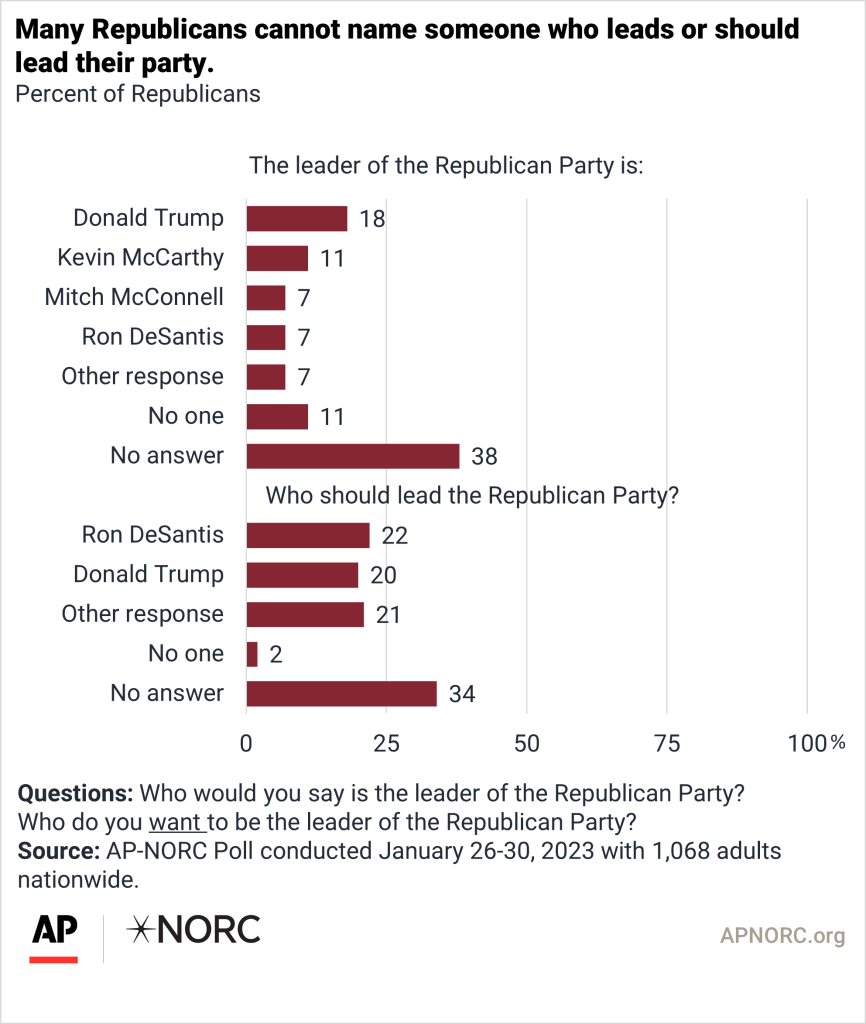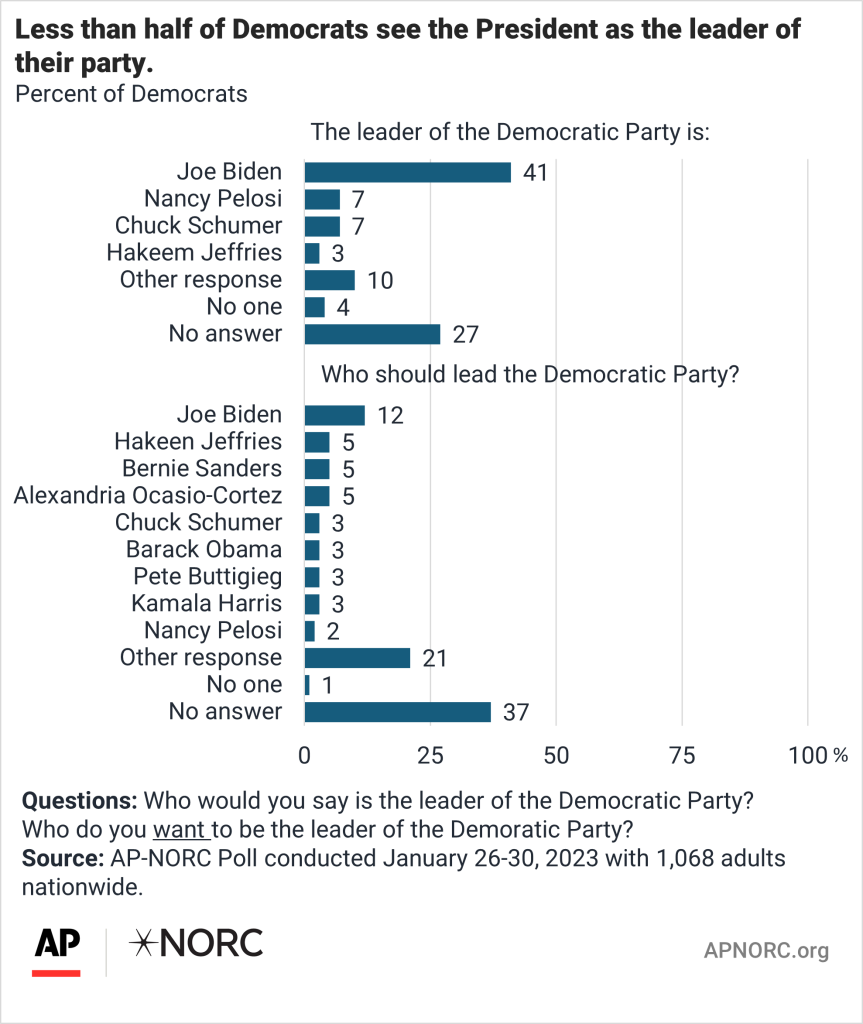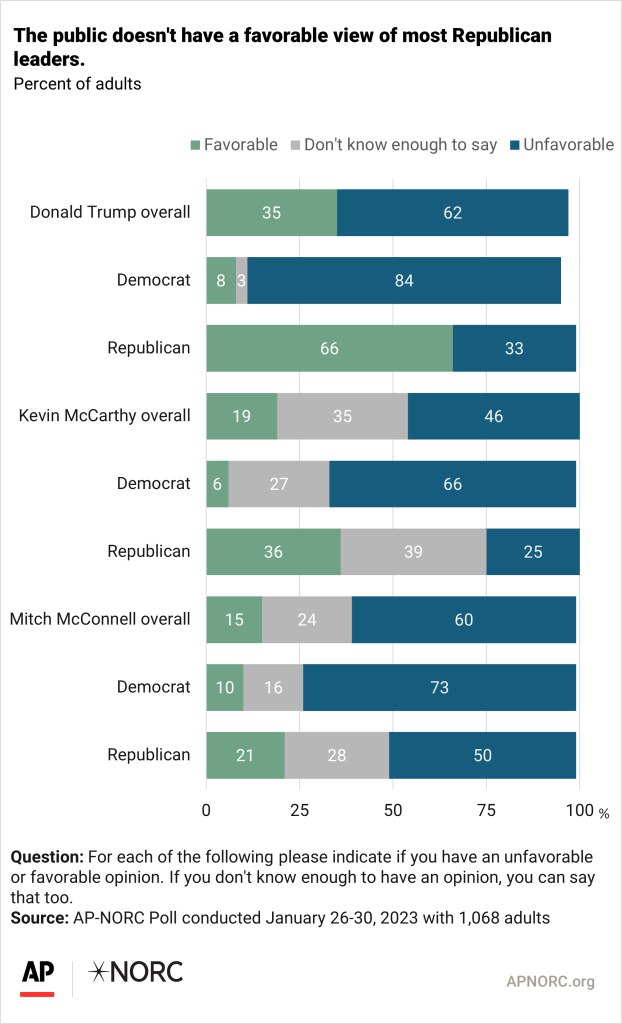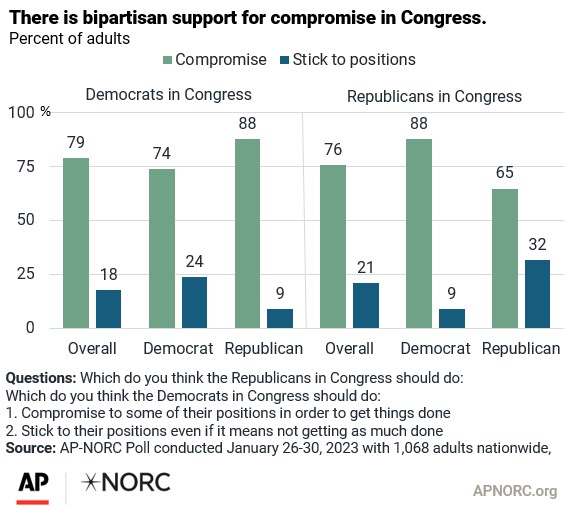
February 14, 2023
Republicans and Democrats alike are expressing concerns about the direction of the parties. Democrats are more optimistic than pessimistic about the future of their party (44% vs 26%), while Republicans are about equally optimistic (38%) and pessimistic (36%) about where their party is headed. Few people, regardless of party identification, have a positive opinion of how Congress is doing its job, and most of the public would like to see more compromise in the Capitol.
The survey asked respondents to name the person they would consider the leader of the Republican and Democratic parties, and then asked partisans who they want to be each party’s leader. Even with President Biden occupying the White House, just 41% of Democrats name him as the current leader of their party. And 34% of Republicans were unable to name a leader of their party.
About a third of both Democrats and Republicans are unsure of who they want to lead their party, and there is no clear leader named for either party. The most common response among Democrats is Biden (12%) and among Republicans, Florida Governor Ron DeSantis is named by 22% and Donald Trump is named by 20%.


Democrats have consistently approved of Biden’s job performance, and Republicans have just as consistently disapproved. In the latest poll, 77% of Democrats approve of how the president is handling his job, along with only 9% of Republicans.
Republicans and Democrats agree about how Congress is handling its job. Overall, only 19% of adults have a positive view of Congress’ job performance, including 20% of Democrats and 17% of Republicans. Seventy-nine percent disapprove.
While Democrats and Republicans have similarily critical views about Congress as a whole, they hold negative views about the other party’s congressional leaders. Only 10% of Republicans have a favorable opinion of Senate Majority Leader Chuck Schumer, former Speaker of the House Nancy Pelosi, or the new House Minority Leader Hakeem Jeffries. Similarly, only 10% of Democrats have a favorable opinion of Senate Minority Leader Mitch McConnell, and 6% have a favorable opinion of the new Speaker of the House Kevin McCarthy.
Democrats have generally favorable views of their leaders. However, Jeffries is still unfamiliar to about half of Democrats.

Donald Trump continues to bring in positive views from Republicans. But Republicans are more negative than positive about McConnell and McCarthy is unknown by more than a third of Republicans.

Only 22% of Republicans are very or extremely confident that their party’s leadership represents their values. Fifty-five percent are somewhat confident and 21% are not confident. In contrast, 42% of Democrats are very or extremely confident that the Democratic leadership represents their values, 36% are somewhat confident, and 20% have little or no confidence.
A large majority of Democrats think there is general agreement among Democratic lawmakers on what the party’s values are. A smaller majority of Republicans say the same about the legislators in their party.

Most Republicans and Democrats would like to see some compromise in Congress. Partisans are more likely to say the other party should be making concessions, but still a majority on both sides think lawmakers should find a middle ground.

The public, regardless of party identification, has little optimism about politics in the United States these days. Sixty-three percent are pessimistic about the state of politics, 15% are optimistic, and 21% are neither optimistic nor pessimistic.
Forty-six percent are pessimistic about the way leaders in the United States are chosen, 23% are optimistic, and 30% are neither.
There are partisan differences in how the future of the two political parties are viewed. Democrats are more optimistic than pessimistic about the future for the Democratic Party, while Republicans are closely divided about the outlook for their party.

The nationwide poll was conducted January 26-30, 2023 using the AmeriSpeak® Panel, the probability-based panel of NORC at the University of Chicago. Online and telephone interviews using landlines and cell phones were conducted with 1,068 adults. The margin of sampling error is +/- 4.2 percentage points.
- Suggested Citation: AP-NORC Center for Public Affairs Research. (February 2023).“The future for the Republican and Democratic parties” [apnorc.org/projects/the-future-for-the-republican-and-democratic-parties]







